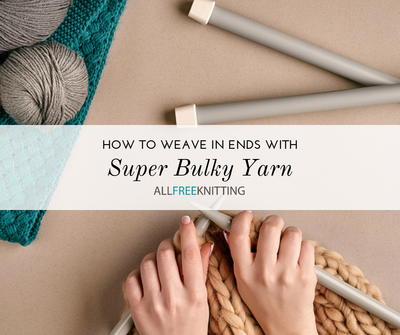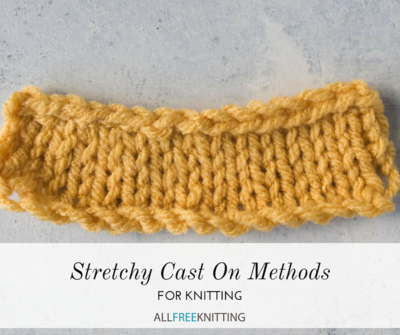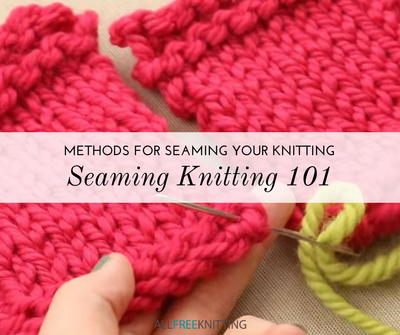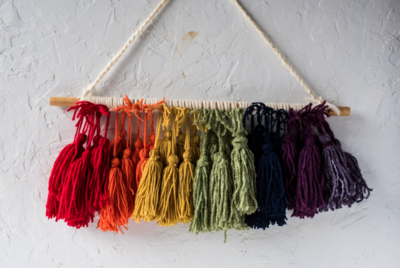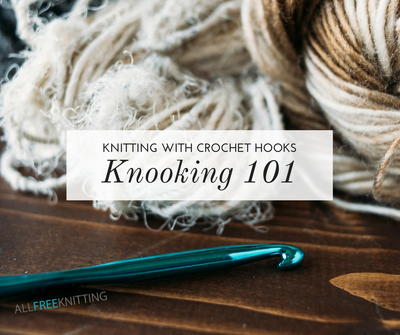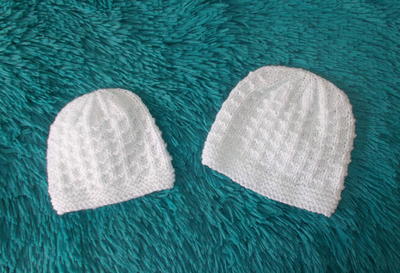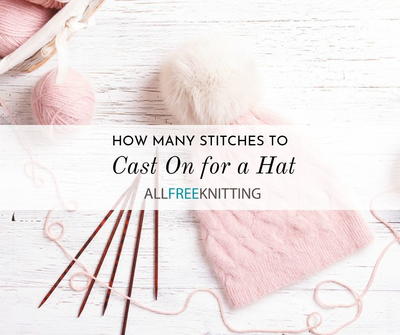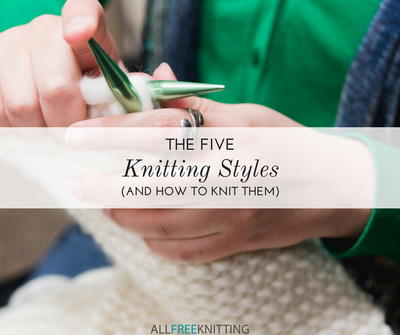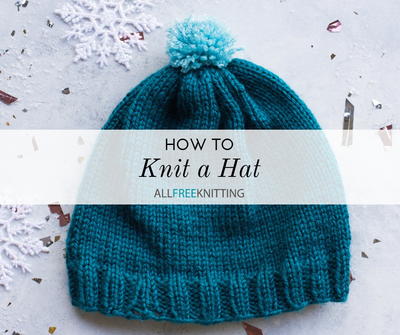How to Weave in Ends with Super Bulky Yarn
Super bulky and roving yarns can be a pain when it comes to weaving in the ends. Here are a few methods to try!
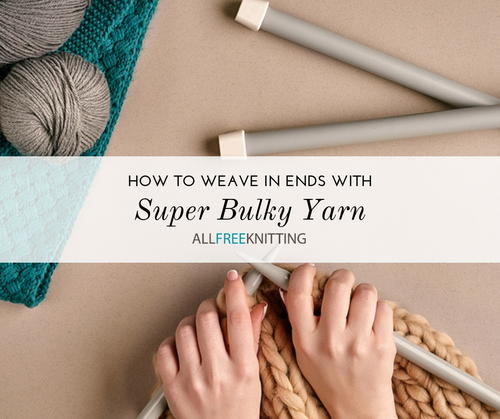
If you're one of the more impatient knitters out there, you're in good company. Even the editors of AllFreeKnitting are guilty of resorting to super bulky weight (weight six or seven) yarn in order to complete projects and presents in less time.
But for those of you who are partial to this thick, chunky, and ultra-warm weight of yarn, there's a problem that you've probably run into when you're coming to the end of your project. The truth is that weaving in ends with super bulky and jumbo weight yarns is sort of a nightmare, and it's difficult to do without making your finished fabric lumpy.
Luckily for you, you've got a few extra options for weaving in ends if you're using this yarn.
But first: a knitting rule of thumb — The thicker your yarn is, in general, the longer you will want your tail of yarn to be. It's always safer to have an extra long tail of yarn to weave in, but for weight 6 and 7 yarns, this is essential. Bigger yarn means bigger stitches, which means it will take a longer piece of yarn in order for your tail to be securely woven into your work.
Option 1: The Russian Join
This is a technique of joining two skeins of yarn together in a way that produces absolutely no ends! While there are many different ways to join a new skein of yarn in knitting, this method is particularly helpful for super bulky yarn because you can get the ends fixed into your work without having to worry about the size of the yarn or the gauge increasing dramatically.
I used this method to join new skeins of yarn when knitting this pillow pattern, and it worked like a charm!
This solution, however, is only really helpful for when you're joining a new skein; you'll still have to weave in the ends from the cast on and bind off of your project.
Option 2: Split the Yarn
Another great option for weave in those pesky, bulky ends is to split the yarn in two multiple parts and weave those into the wrong side of your work. This is particularly helpful for those insanely bulky roving yarns that are often used to make blankets or pillows.
This method might sound like a win-win, but there are some pros and cons:
Pros:
- You don't get weird buckling or bunching on the wrong side of your work like you would with normal weaving in ends.
- Getting super bulky yarn to behave properly when using a tapestry needle can sometimes be a bit of a pain. If you split up the plies of the yarn, this should be much easier to do.
Cons:
- This will take a long time to do. Much longer than normal weaving in ends because you will have to repeat the process multiple times for each end.
- There's a good chance that your yarn will start felting right away.
Option 3: Try Duplicate Stitch
Duplicate stitch is such a fun technique that all knitters should try at least once. You can use contrasting yarn to make fun designs, but you can also use this method to weave in your ends!
In essence, duplicate stitch is simply using a tapestry needle to thread your yarn around existing stitches, creating a literal duplicate stitch on top of the old one. This can be done with contrasting yarn to create fun designs, but if you use the same color of yarn, it's essentially invisible on both the right and wrong sides of your work!
Check out our complete tutorial for this technique here:
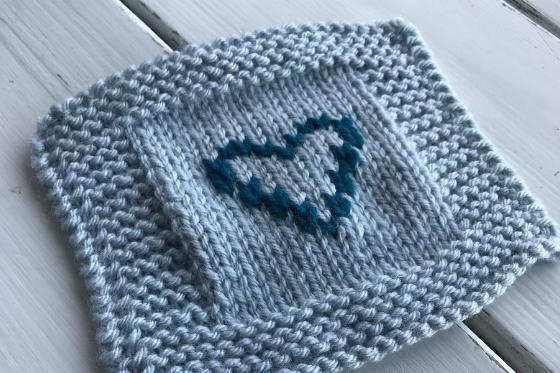
Option 4: Sew In Your Ends
This is sort of a last-resort method, but it does a good job of actually compressing and hiding the yarn on the wrong side of your work.
Essentially the big difference between weaving in your ends and sewing in your ends is the needle used and where the yarn is "stuffed" into the fabric. To sew in your ends, simply thread the yarn through a regular sewing needle; (it's hard but not impossible). Then, insert the needle into the yarn of the stitches themselves and pull the tail of yarn through; this will lay your end into the plies of the yarn that you used to knit your stitches.
While this method does take some getting used to, it can be a really great option for thick, roving yarns. It also will make your ends felt into your pattern in no time, ensuring a secure finish to your project.
Up Next:
Knitting Resources for Beginners
Do you have any fun tips or tricks for weaving in those super bulky yarns?
Let us know in the comments!

